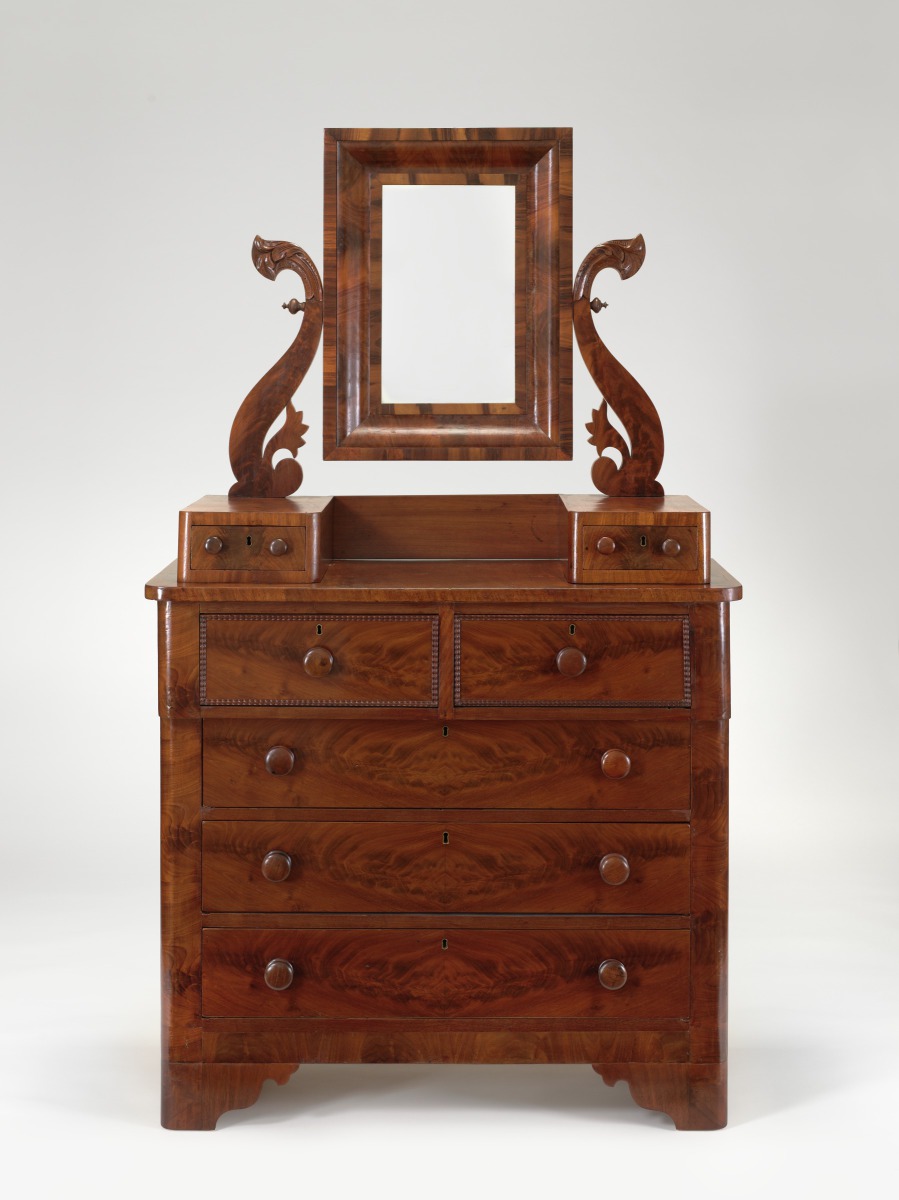
Dressing Bureau (Primary Title)
Attributed to, Thomas Day, American, 1801 - 1861 (Artist)
This dressing bureau demonstrates Thomas Day’s unique variation on the Classical Revival, a furniture and architectural style prevalent throughout the United States between 1830 and 1860. While the form draws on the published designs of Baltimore architect John Hall, Day enhanced its basic “pillar and scroll” motifs in the bureau’s stylized, somewhat whimsical mirror supports. A closely related bureau was produced by Day as part of a suite commissioned by North Carolina governor David Reid.
Thomas Day was born in Dinwiddie County, Virginia, in 1801 to John Day, a North Carolina-born cabinetmaker, and Mourning Stewart, the daughter of a property-owning free man of color from the Petersburg area. The family acquired a plantation in Sussex County, where Thomas was educated prior to his apprenticeship. Settling in Milton, North Carolina, Day was respected as “a first rate workman, a remarkably sober, steady and industrious man, a highminded, good and valuable citizen, possessing a handsome property in this town.” At one point, he owned the largest woodworking firm in the state.
Some object records are not complete and do not reflect VMFA's full and current knowledge. VMFA makes routine updates as records are reviewed and enhanced.

